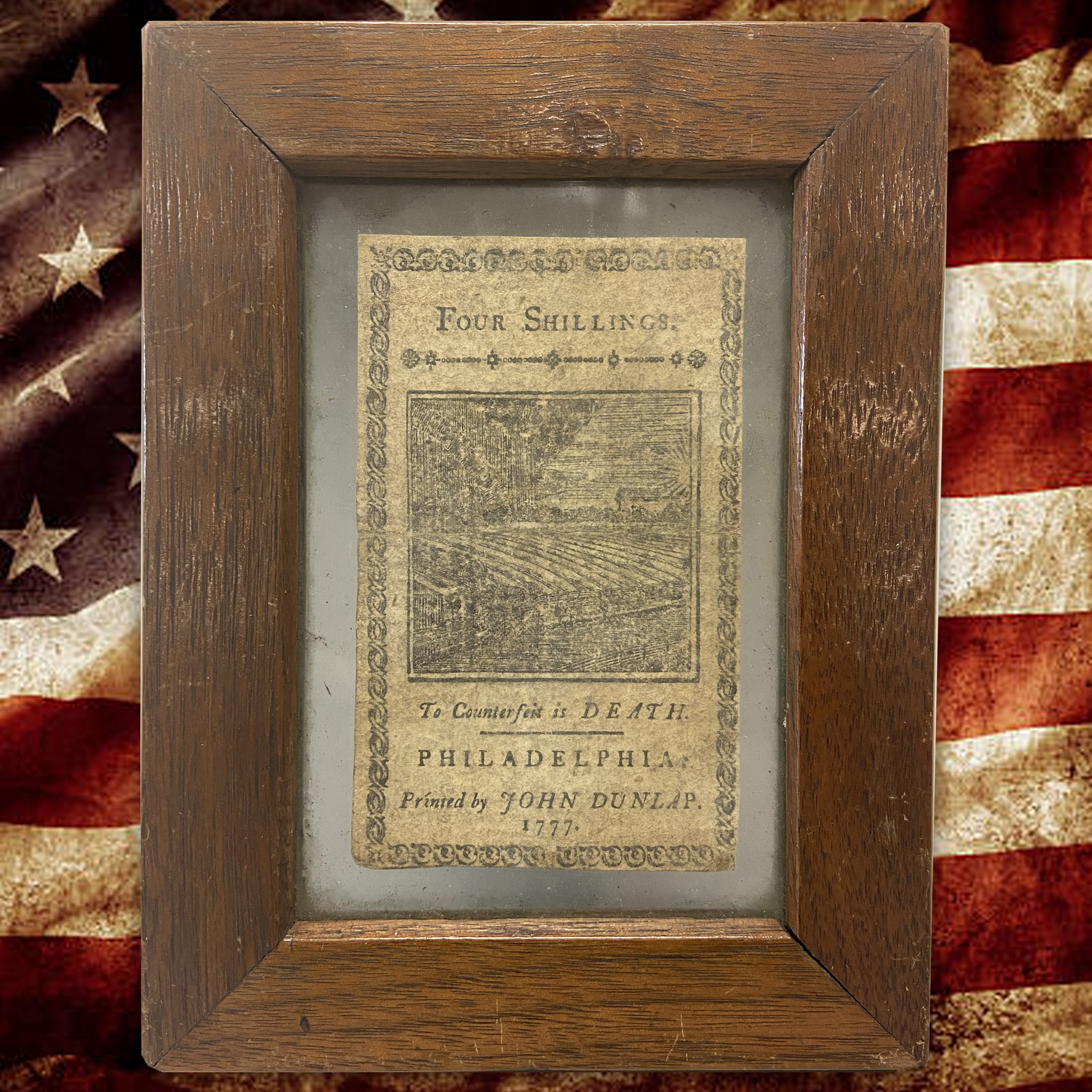5 Minute American History Lesson: Continental Congress Currency

Happy 4th of July! Today we celebrate our independence with a 5 minute American history lesson. Featured is a piece of Continental Congress Currency printed by John Dunlap.
John Dunlap, of Philadelphia, is best known for the “Dunlap Broadside”. He was responsible for the first printing of broadsides of the Declaration of Independence on July 4, 1776. The broadsides were posted in townhalls and public meeting places. Dunlap’s copies were without the signatures of the members of Congress, the printing of these copies were printed months later. Dunlap became the first official printer of the Continental Congress.
During the American Revolution, Dunlap joined the First Troop Philadelphia City Calvary and participated in the Battle of Trenton and the Battle of Princeton under General George Washington. He became the first official printer of the Continental Congress.
Only 200 copies of the Declaration of Independence were printed, only 26 known copies are still in existence today.

By an Act of the General Assembly of the Commonwealth of Pennsylvania on March 20, 1777, John Dunlap began to print Pennsylvania currency. Printed bills ranged in denomination from three pence to four shillings. Each denomination had its own distinct border. On the bills was the Arms of the Commonwealth of Pennsylvania consisting of a ship, plough and three sheaves of wheat. This mark was intended to deter counterfeiting. As one can view on the bill, counterfeit is DEATH.
In September 1777, the British occupied Philadelphia. Dunlap moved his press to Lancaster, PA where the Philadelphia Assembly was meeting. He was able to return to Philadelphia the following July and printed currency until 1780’s when the Continental Congress was disbanded.

By Melissa Jay










